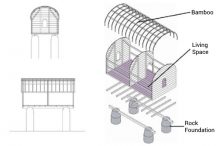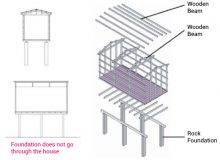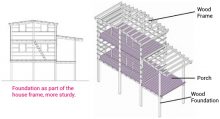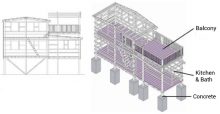Name(English): Tai O Stilt Houses
Name(Chinese): 大澳棚屋
Category: Culture and History; Architecture
Address(English): Tai O, Lantau Island
Address(Chinese): 大嶼山大澳
Address Google Map Link: https://goo.gl/maps/c5gJ7NijPQn1yx6Z7
Address longitude and latitude: 22.26339082305569, 113.86528093818015
Opening hours:
MON 00:00 – 00:00
TUE 00:00 – 00:00
WED 00:00 – 00:00
THU 00:00 – 00:00
FRI 00:00 – 00:00
SAT 00:00 – 00:00
SUN 00:00 – 00:00
Recommended Time to Visit: before 5pm
Accessibility Note: Easy access
Reminder:Take bus no. 11 from Tung Chung MTR station or ferry from Tung Chung Pier
If you ask the locals about what represents the best of Tai O, the stilt houses and shrimp paste are the two first things they will name. The small houses sitting on stilt over water and the aroma of shrimp paste hovering do resonate the quaint vibes of the fishing village, but most importantly, they serve as a living proof of its centuries-old history.
Tai O is home to the Tanka community which is a Southern Chinese ethnic group surviving by the water through fishing and salt production. The fishing village used to be a populated town and a major trading hub during the Qing dynasty when China opened Guangzhou to foreign trades, as its location is close to the Pearl River Delta. The businesses were still going strong until the end of 1940s – it is definitely hard to imagine this tiny place was even crowded than Central back in the days!
The “Venice of Hong Kong” has its identity built around a sad story though. Tanka folks were always on the verge of being stigmatized in the past, so they could only build houses on stilts and reside above the water in order to separate themselves from the Chinese community living on land.
If you liken the transition from sea to land as a progression of equality in society, then it took Tanka folks over a hundred years to finally reach the current status. Tai O stilt houses are solid witnesses of this transition.
There are four types of stilt houses:
First generation stilt house is more like a boat fixed to the stone foundation. Since the cover is built by bamboo, lightweight and flexible material, it does not do very well in windy days…

The second generation stilt house made an improvement to the aerodynamic of the roof. Yet the foundation and the house frame are connected after each component was completed, a typhoon with strong wide and tide could lift the “house” off into the sea…

The third generation stilt house combines both the foundation and the house frame together. Giam wood (坤甸木) was used because it is the material used for building boats. But it turns out a bad idea given the wood is quite easy to catch fire…


Finally, the Fourth generation reinforce the foundation with concrete and expand the living spaces as the current standard.

To cross the creek that divides the village, residents used to rely on the hand-pulled punt but it is much easier now to get to the other side over the Tai Chung bridge. The cluster of stilt houses does not come easy but its unique scenery and the cultures developed around it do deserve all of our appreciation. The best way to get a close-up view of how they are situated above the water is to take a boat ride from the footbridge area, that also leads you to the Tai O Heritage Hotel.
#discoverhongkong #explorehongkong #visithongkong #hongkongtravel #ilovehongkong #heritage #hongkongheritage #chinesetradition #culturetrip #hongkongculture #hkhistory #hongkonghistory #hongkongstory


